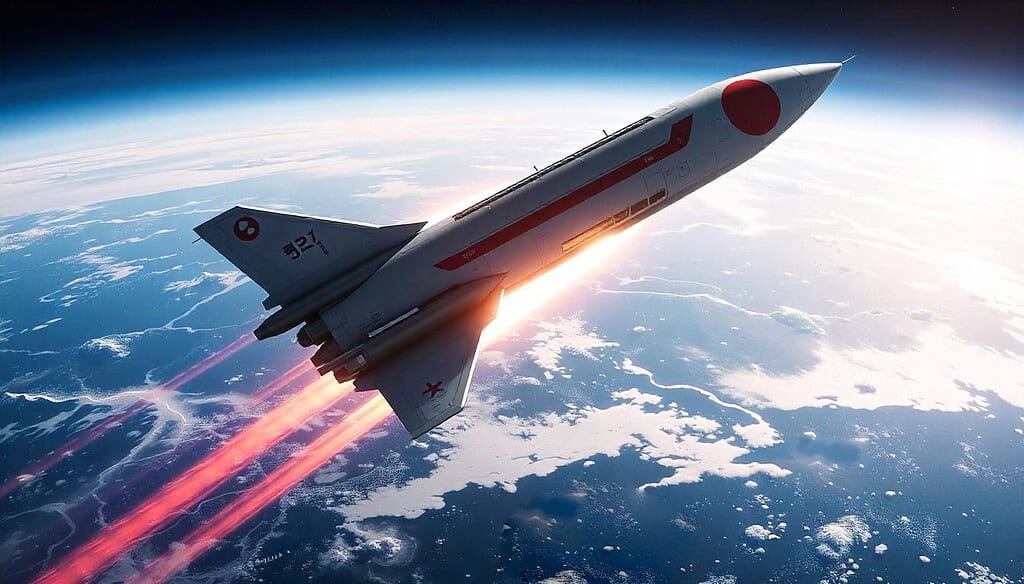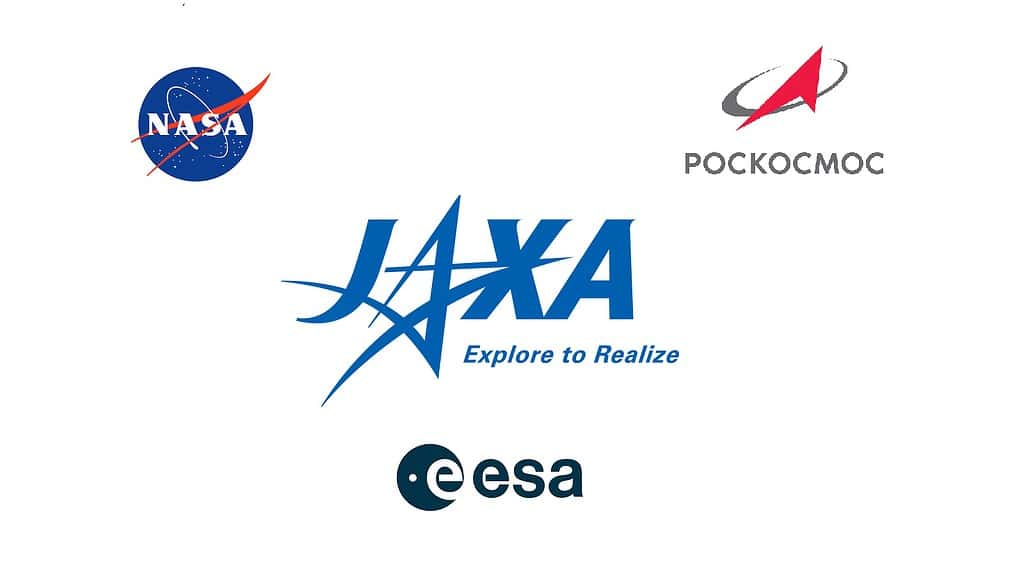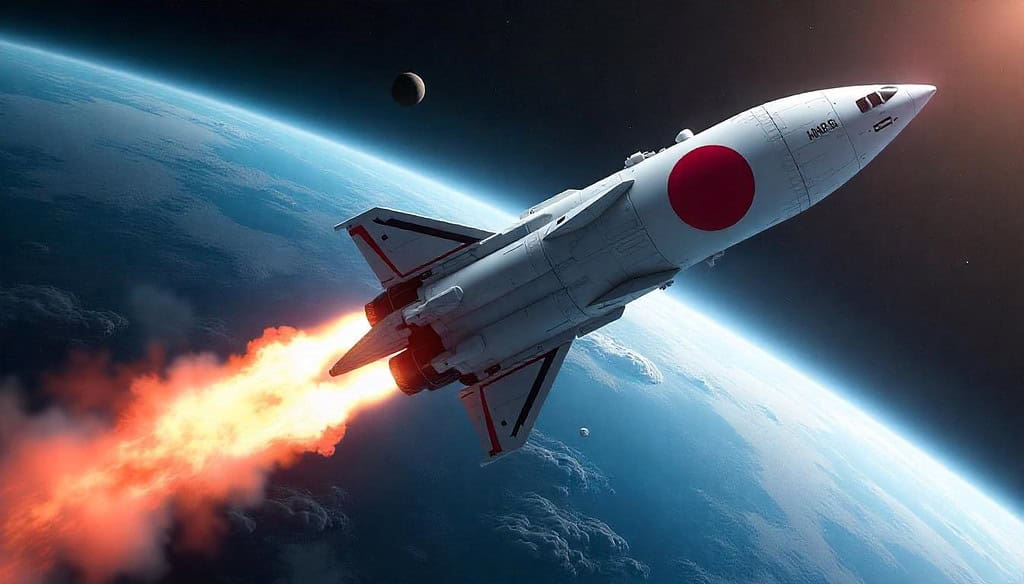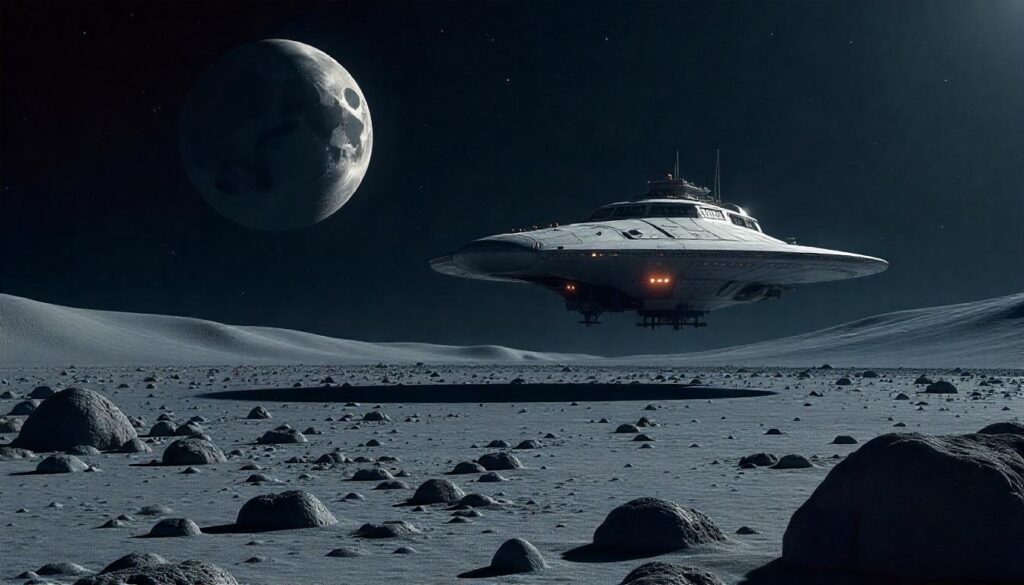Table of Contents
Japan’s Space Program: Brief History and Various Components

Japan’s space program boasts a fascinating history filled with significant advancements and accomplishments, fueled by a combination of national aspirations and technological prowess. It all started in the 1950s when the Institute of Industrial Science at the University of Tokyo launched Japan’s first foray into space research. Key early achievements included the launch of experimental rockets like the “Pencil Rocket” in 1955, which represented Japan’s initial venture into the realm of space science.
By the 1970s, Japan’s space program had made a remarkable leap by successfully launching its first satellite, “Osumi,” in 1970, becoming the fourth country to achieve this milestone. In 2003, the Japan Aerospace Exploration Agency, or JAXA, was established through the merger of three organizations: the National Space Development Agency of Japan (NASDA), the National Aerospace Laboratory of Japan (NAL), and the Institute of Space and Astronautical Science (ISAS).
JAXA is the main organization responsible for managing Japan’s space missions, which encompass everything from satellite launches to deep space exploration. Its impact on the Japan’s space program is profound, with standout achievements like the Hayabusa missions, which successfully collected samples from asteroids. Notably, Hayabusa2 returned material from asteroid Ryugu in 2020, significantly enhancing our understanding of the solar system’s formation.
JAXA also plays a vital role in international partnerships. It has been an essential collaborator in the International Space Station (ISS) program, where its Kibo laboratory module has contributed to scientific research in microgravity. Furthermore, JAXA has teamed up with NASA, the European Space Agency (ESA), and other global entities on projects focused on Earth observation, climate monitoring, and planetary exploration.
In addition to JAXA, various government entities have also played a part in Japan’s space program. The Ministry of Defense has its own interests in space, mainly focusing on military uses like communication and reconnaissance satellites. As Japan’s national security concerns grow, there have been increasing discussions about bolstering its defense-related space capabilities. The Cabinet Office of Japan oversees the Quasi-Zenith Satellite System (QZSS), which enhances satellite navigation for Japan and the Asia-Pacific region.
Recently, private space companies in Japan have started to take on a more prominent role, aligning with global trends toward the commercialization of space exploration. Companies such as ‘ispace’ have ambitious goals to explore and develop the Moon, aiming to establish sustainable systems for utilizing lunar resources. Another significant player is Interstellar Technologies, which is dedicated to creating low-cost commercial rockets, making space more accessible for small satellite operators. Axelspace, known for its small satellite constellations focused on Earth observation, is also a vital contributor, while ALE Co., Ltd. aims to merge space technology with entertainment by producing artificial meteor showers.
The increasing participation of private companies in Japan’s space program signifies a larger trend in the space industry, where collaboration between public and private sectors is becoming more crucial. While JAXA remains at the forefront of Japan’s space endeavors, these private firms are enhancing the country’s capabilities in space exploration, resource management, and satellite technology.
With its rich history, ongoing innovations, and a flourishing private sector, Japan’s space program is well-equipped to play a significant role in the future of global space exploration and technology.
Japan’s Space Program: Collaboration with Other Space Organizations

Japan’s space program has a long-standing history of international collaboration, which has been key to its advancements and achievements in space exploration. The Japan Aerospace Exploration Agency (JAXA) works closely with other space organizations such as NASA, the European Space Agency (ESA), and Russia’s space agency, Roscosmos.
One of the most notable examples of this cooperation is Japan’s involvement in the International Space Station (ISS). JAXA contributed the Kibo laboratory module, which is used for conducting experiments in the microgravity environment of space. Japanese astronauts have regularly participated in ISS missions, strengthening ties with global space agencies.
In addition to its ISS role, Japan’s space program has collaborated with NASA on planetary exploration missions. JAXA’s Hayabusa2 mission, which successfully collected samples from asteroid Ryugu, benefited from cooperation with NASA on data sharing and research. The two agencies also partnered for the upcoming Martian Moons eXploration (MMX) mission, where JAXA will send a spacecraft to explore Mars’ moons, with NASA contributing key scientific instruments.
JAXA also works with ESA, particularly in Earth observation and climate monitoring. Together, they have launched satellites to study the Earth’s atmosphere and environmental changes. Japan’s space program has joined global efforts in areas such as satellite navigation, contributing to projects that enhance global positioning systems.
This international cooperation not only strengthens Japan’s own capabilities but also enhances global understanding of space and the Earth. By partnering with other space agencies, Japan’s space program plays an essential role in advancing scientific knowledge, improving technology, and supporting peaceful exploration of outer space.
8 Incredible Achievements of Japan’s Space Program

1. First Satellite Launch (Osumi, 1970)
The first significant achievement of Japan’s space program was the successful launch of its first satellite, Osumi, in 1970. This milestone marked Japan’s entry into the exclusive group of nations with spacefaring capabilities, making it the fourth country, after the Soviet Union, the United States, and France, to send a satellite into orbit. The launch was conducted by the Institute of Space and Astronautical Science (ISAS), which was a precursor to the Japan Aerospace Exploration Agency (JAXA). The Osumi satellite was a technology demonstrator, showcasing Japan’s ability to develop and launch a satellite into space.
This achievement was a pivotal moment for Japan’s space program, reflecting the country’s growing technical expertise and desire to compete on the global stage. While Osumi itself did not carry any scientific instruments or serve specific missions, its successful deployment demonstrated that Japan had the potential to pursue more complex missions in the future. This early success laid the foundation for subsequent advancements in satellite technology and launch vehicles within the space program.
By achieving this feat, Japan’s space program gained global recognition, enhancing its position in the international space community. The Osumi launch was not just a technical achievement but also a symbol of Japan’s commitment to peaceful space exploration. It also spurred further development in aerospace engineering, leading to a steady increase in satellite launches and space missions in the decades that followed. This historic moment established a strong foundation for Japan to evolve its space capabilities in satellite deployment and beyond.
2. Hayabusa Mission (2005)
The Hayabusa mission, launched in 2003 and concluded in 2010, was one of the most groundbreaking achievements in Japan’s space program. This ambitious mission aimed to explore asteroid 25143 Itokawa, marking the first time any spacecraft was designed to return samples from an asteroid to Earth. Managed by JAXA, the mission showcased Japan’s advanced technological capabilities and expanded the nation’s influence in space exploration. After a journey of nearly two years, Hayabusa successfully reached the asteroid in 2005, where it made multiple attempts to collect surface samples.
Despite various technical challenges, including communication problems and engine malfunctions, the Hayabusa mission demonstrated the resilience of Japan’s space program. After completing its primary goal of sample collection, the spacecraft faced difficulties in returning to Earth, yet JAXA’s engineers managed to guide it back safely. In 2010, Hayabusa re-entered Earth’s atmosphere, delivering a capsule containing samples from the asteroid, a first in human history.
This mission marked a major achievement for Japan’s space program, positioning Japan as a leader in planetary exploration. The samples returned provided invaluable information about the composition of asteroids, contributing to our understanding of the early solar system. The Hayabusa mission was a testament to Japan’s ingenuity and determination, proving that Japan’s space program could achieve complex, high-risk missions that contributed to global space science. The mission’s success also inspired subsequent missions like Hayabusa2, further establishing Japan’s role in the international space community.
3. Kibo Module (2008)
Another major achievement of the Japanese space program was the successful development and integration of the Kibo module into the International Space Station (ISS) in 2008. Kibo, meaning “hope” in Japanese, is Japan’s largest contribution to the ISS, and it plays a vital role in scientific experiments conducted in microgravity. The module is equipped with advanced laboratory facilities, enabling researchers to conduct a wide range of experiments in space, particularly in biotechnology, medicine, and material science.
Kibo’s development was overseen by JAXA, which collaborated with international partners such as NASA to ensure the module’s successful integration into the ISS. Kibo consists of several components, including a pressurized laboratory, an exposed facility for space environment experiments, and a logistics module for storing experiment equipment and supplies. One of the key features of the Kibo module is its ability to conduct experiments both inside the station and in the harsh conditions of outer space using its exposed facility.
The inclusion of Kibo in the ISS marked a significant milestone for Japan’s space program, as it showcased Japan’s capability to design and build highly complex space infrastructure. It also solidified Japan’s role as a key contributor to international space exploration efforts. The experiments conducted within Kibo have provided critical insights into life sciences and physics in microgravity, benefiting not only Japan but the global scientific community. By developing Kibo, the scientists of Japan’s space program demonstrated its commitment to peaceful scientific collaboration, contributing significantly to humanity’s understanding of space and its potential applications for Earth.
4. Hayabusa2 Mission (2020)
The Hayabusa2 mission, one of the most significant milestones in the history of Japan’s space program, was launched in 2014 and successfully returned to Earth in 2020. It followed in the footsteps of the original Hayabusa mission, but with more advanced technology and an even more ambitious goal: to retrieve samples from the asteroid Ryugu. Japan’s program designed Hayabusa2 to gather insights into the early solar system by studying the asteroid’s composition. After a three-and-a-half-year journey, the spacecraft reached Ryugu in 2018, where it carried out multiple successful landings and collected surface and subsurface materials.
Hayabusa2’s innovative technology allowed it to fire a projectile at the asteroid’s surface, exposing underground material that had not been altered by space weathering. This crucial step provided scientists with more pristine samples, offering a clearer glimpse into the building blocks of planets. Despite several technical challenges, the dedication of the Japanese scientists paid off when Hayabusa2 successfully returned to Earth in December 2020, bringing back over five grams of asteroid material.
This mission significantly expanded Japan’s space program’s role in planetary exploration and international space research. The samples returned by Hayabusa2 are being studied globally, offering valuable data on the origins of the solar system. The mission also demonstrated the space program’s ability to manage complex, multi-year missions with precision and innovation, further solidifying its position as a global leader in asteroid exploration.
5. Akatsuki (2015)
Akatsuki, Japan’s first successful mission to study Venus, was a groundbreaking achievement in Japan’s space program. Launched in 2010 by JAXA, Akatsuki was initially meant to enter Venus’ orbit that same year. However, due to a malfunction in its propulsion system, the spacecraft failed to achieve orbital insertion. Despite this setback, the Japanese scientists did not give up. JAXA engineers spent the next five years carefully adjusting the spacecraft’s trajectory, eventually succeeding in 2015 by using an innovative approach to utilize Akatsuki’s remaining engines.
Once in orbit, Akatsuki began its study of Venus’ atmosphere and climate, becoming the first Japanese mission dedicated to planetary weather research. Its primary objective was to understand the planet’s extreme weather patterns, including its thick clouds of sulfuric acid and intense surface heat. Akatsuki provided the first detailed observations of the dynamic atmosphere of Venus and its super-rotation, where the planet’s atmosphere moves much faster than its surface.
Akatsuki’s success underscored the resilience and ingenuity of Japan’s space program. Despite the initial failure, the mission was salvaged, and it continues to provide valuable data that enhances our understanding of Venus. Akatsuki’s contributions to planetary science have been widely recognized, reinforcing Japan’s reputation for perseverance and scientific achievement in space exploration.
6. HTV Cargo Missions (2009–2020)
The HTV cargo missions were a vital component of Japan’s space program, playing a crucial role in supporting the International Space Station (ISS) from 2009 to 2020. Known as the H-II Transfer Vehicle (HTV), this series of spacecraft was developed by JAXA to deliver essential supplies, equipment, and scientific instruments to the ISS. These missions helped ensure the continuous operation of the ISS, with each HTV carrying food, water, experiments, and even replacement parts for the station’s modules.
One of the standout features of the HTV was its ability to transport both pressurized and unpressurized cargo, making it highly versatile for a wide range of payloads. The Japanese scientists and engineers from the Japanese space agency designed HTV to dock with the ISS through a robotic arm, making it a crucial component in the station’s resupply missions. Over the course of its 11-year mission timeline, HTV demonstrated a flawless track record, with each mission successfully delivering vital supplies to the ISS.
These cargo missions not only underscored the technical expertise of the Japanese space program but also its importance in international collaboration. The HTV missions supported global scientific research by enabling the ISS to function smoothly and continuously. Additionally, these missions highlighted Japan’s commitment to contributing to the peaceful use of outer space and international partnerships in human space exploration. The success of the HTV program laid the groundwork for the development of the next-generation HTV-X, ensuring Japan’s continued role in future space logistics.
7. Himawari Satellites (1977–Present)
The Himawari series of satellites represents one of the most critical and enduring achievements of Japan’s space program. Since the launch of the first Himawari satellite in 1977, these weather satellites have provided continuous and crucial data for meteorological observation. The primary purpose of the Himawari satellites has been to monitor weather patterns, helping Japan and other countries in the Asia-Pacific region to predict severe weather events, such as typhoons, floods, and storms. These satellites are an essential tool for disaster management and environmental monitoring, significantly improving Japan’s ability to respond to natural disasters.
The space agency has consistently upgraded the Himawari series over the years, incorporating advanced technologies to improve the accuracy and timeliness of weather forecasts. Himawari-8 and Himawari-9, the most recent in the series, launched in 2014 and 2016 respectively, provide high-resolution images of the Earth every 10 minutes. These satellites are equipped with sophisticated sensors that can monitor not only weather conditions but also environmental changes, such as volcanic activity and wildfire spread.
The success of the Himawari satellites has strengthened Japan’s space program’s reputation in Earth observation and meteorology. By providing real-time weather data to countries across the Asia-Pacific region, Japan’s contributions through the Himawari series have had a global impact. This long-running satellite program underscores the dedication of Japan’s space program and its scientists to improve disaster preparedness and environmental understanding, highlighting its role in addressing some of the most pressing challenges related to climate and weather phenomena.
8. IKAROS (2010)
The IKAROS mission, launched in 2010, marked a pioneering moment for Japan’s space program as it became the world’s first successful interplanetary solar sail mission. IKAROS, short for Interplanetary Kite-craft Accelerated by Radiation Of the Sun, demonstrated the use of solar sail technology, an innovative propulsion system that utilizes the pressure of sunlight to propel a spacecraft. This technology allowed IKAROS to travel without the need for conventional fuel, opening new possibilities for future space exploration.
IKAROS was deployed on a journey toward Venus, where it successfully unfurled its large, thin sail, which captured solar radiation to generate thrust. The mission proved that solar sails could be a feasible propulsion method for long-distance space travel, particularly for missions to distant planets or even other star systems. The scientists and engineers of Japan’s space program saw this as a breakthrough in the development of alternative propulsion technologies, which could enable more cost-effective and energy-efficient missions in the future.
In addition to its propulsion demonstration, IKAROS carried scientific instruments that gathered data on space radiation and solar wind, contributing valuable information to space science. The success of this mission underscored the innovative spirit of Japan’s space program, proving that Japan could not only keep pace with global advancements in space exploration but also lead in developing cutting-edge technologies. IKAROS remains an important achievement, symbolizing Japan’s role in pushing the boundaries of space travel and exploration through creative and forward-thinking approaches.
Japan’s Space Program: Looking Ahead in The Future

The future of Japan’s space program looks promising as it continues to focus on innovation, exploration, and international collaboration. With ambitious plans for lunar exploration and advancements in satellite technology, Japan aims to further strengthen its position in the global space community. One of the key areas Japan is prioritizing is lunar exploration. Through its participation in NASA’s Artemis program, Japan plans to contribute to the construction of a lunar gateway, a space station that will orbit the Moon and serve as a base for future human exploration. This step reflects Japan’s long-term vision of playing a significant role in both robotic and crewed missions to the Moon and beyond.
Japan’s space agency, JAXA, is also developing new technologies to enhance its satellite capabilities. As environmental concerns grow, the need for more advanced Earth observation satellites has become critical. Japan is investing in next-generation satellites that will improve weather prediction, monitor environmental changes, and support disaster management. These advancements will not only benefit Japan but also contribute to global efforts in climate change mitigation and environmental protection. The program is also exploring the development of reusable launch vehicles, which would significantly reduce the cost of space missions and increase Japan’s competitiveness in the commercial space sector.
In addition to its scientific goals, the Japanese space program is working to boost the nation’s presence in the emerging commercial space market. Japanese private companies are collaborating with JAXA to develop space tourism, satellite launches, and other commercial ventures. As Japan’s space program evolves, it will continue to balance its traditional focus on research and exploration with new opportunities in the commercial sector. With a blend of innovation, international cooperation, and a focus on sustainability, Japan’s space efforts are poised to shape the future of space exploration and technology in meaningful ways.
Disclaimers: *This article is only for informational purposes.
**Do not make your important decisions based solely on the information provided in this article. Do your own research.
***Information in this article may vary or may get updated in the future.
Read More Science and Space Articles
- STEM Fields: 8 Important Reasons Why You Must Learn Them
- Making Your Kid Efficient At STEM Subjects: 8 Important Steps
- Making Your Kid Science Enthusiast: 8 Important Steps
- Becoming A NASA Aspirant: 8 Important Steps You Must Follow
- Top 4 Colored Rice That Are Superior to White Rice
- Top 8 Important Wellness Habits That You Must Follow
- Top 5 Amazing Whole Grains That Are Healthier Than Rice
- Indian Space Program: 8 Incredible Achievements
- China’s Space Program: 5 Amazing Accomplishments
- Oranges: 11 Incredible Facts About This Tangy Citrus Fruit
- NASA’s MOXIE Creates O2: Big Step Towards Mars Colonization
- Top 5 Amazing Properties of Time That Defy Common Sense
- 10 Factors for Emergence of Intelligent Life in The Universe
- Space Science: 6 Vital Reasons Why We Should Invest in It
- Solar System: 10 Astonishing Uniqueness of our star system
- Our Universe: An Incredible Journey of 13.7 Billion Years
- Top 6 Solar System Objects That Might Destroy Life On Earth
- Certain End of The Universe: 4 Forces of Nature to Watch Out For
- Big Bang: An Incredible Start of Universe 14 Billion Years Ago




